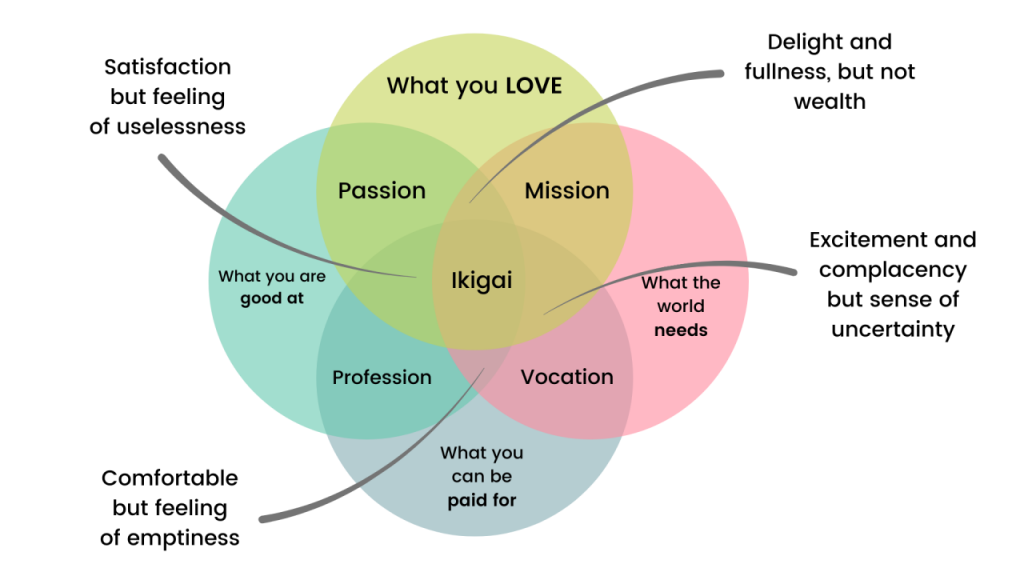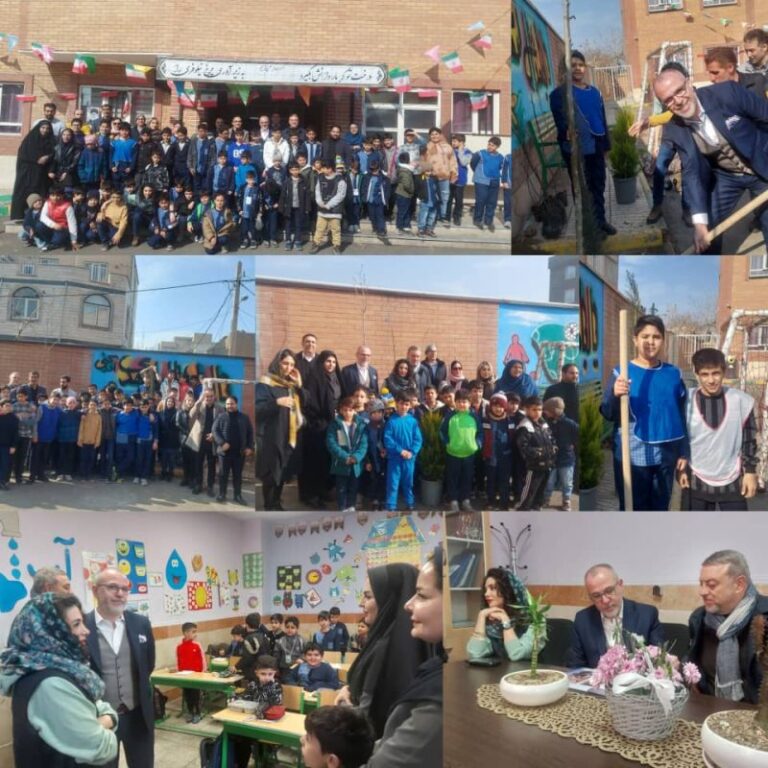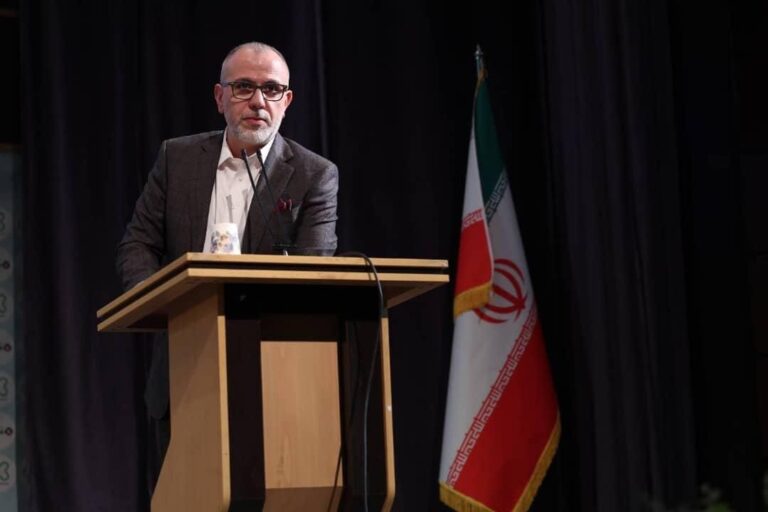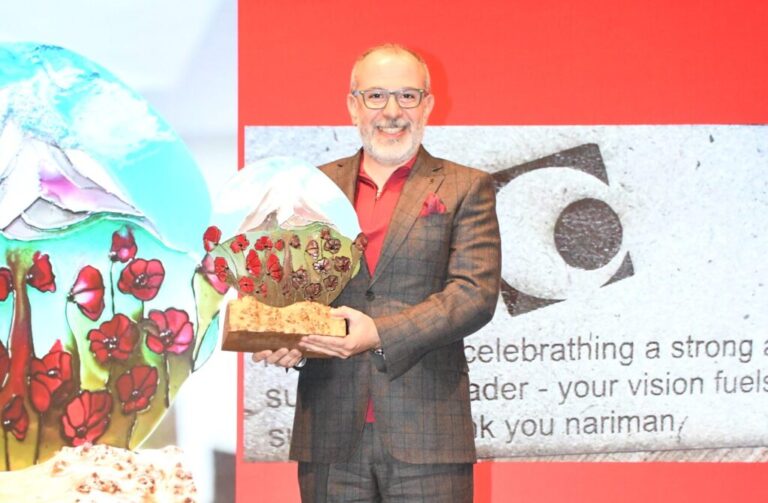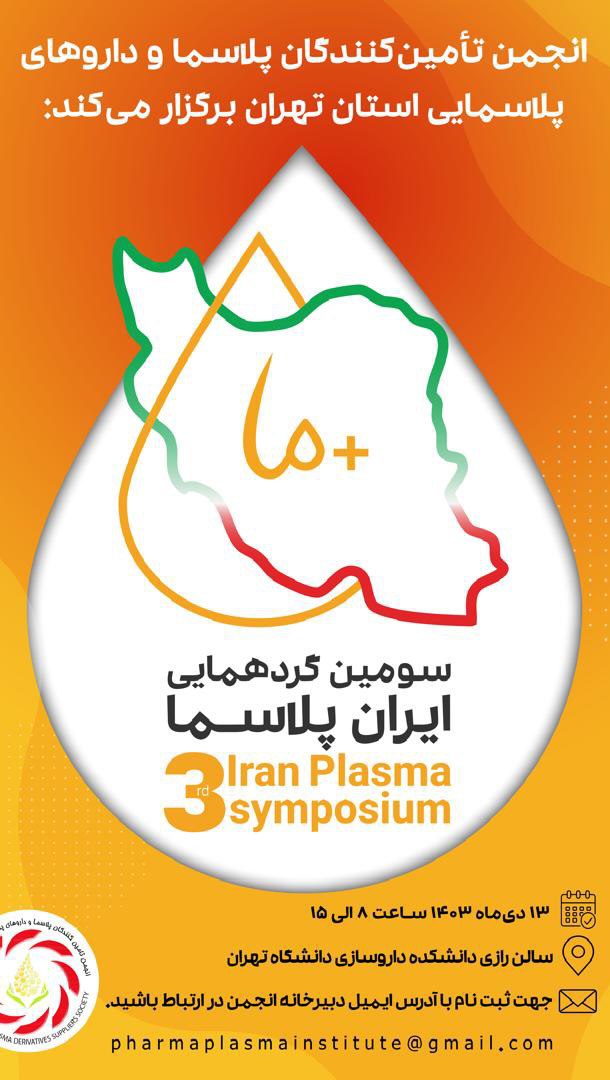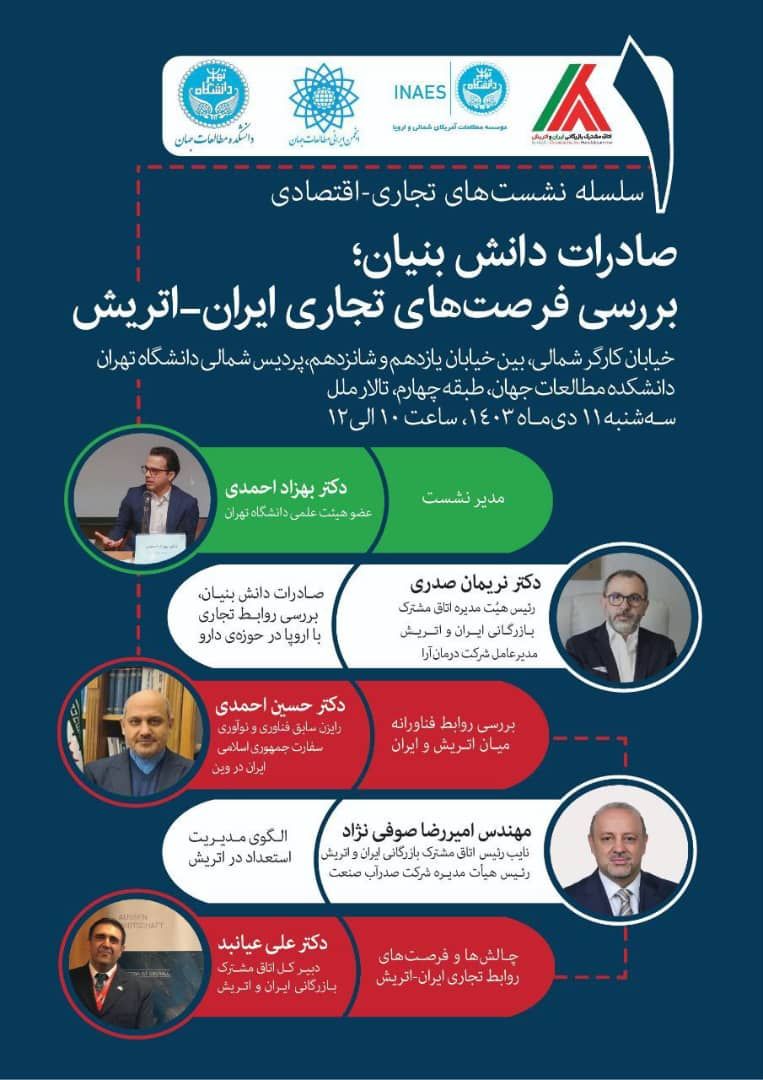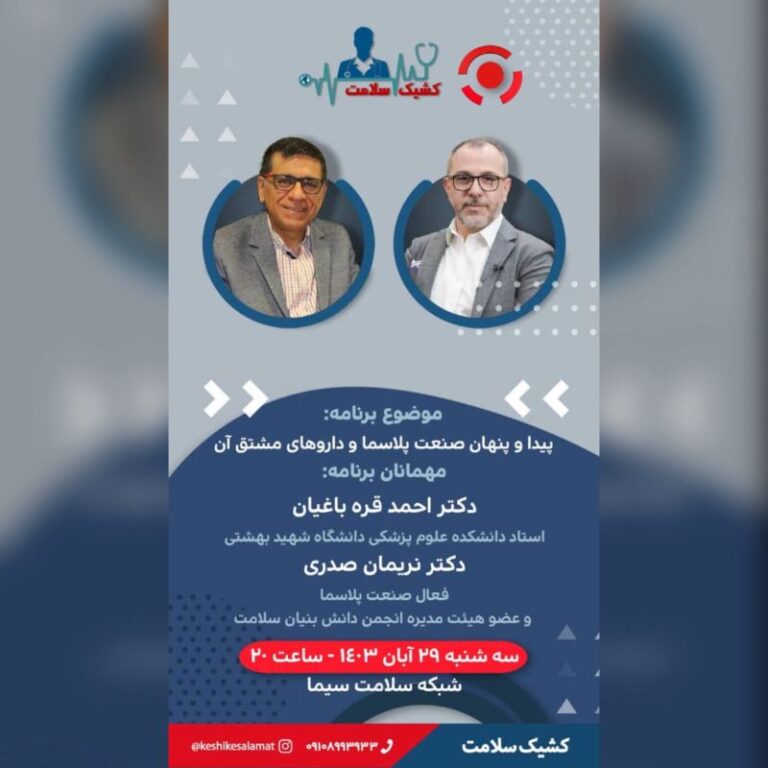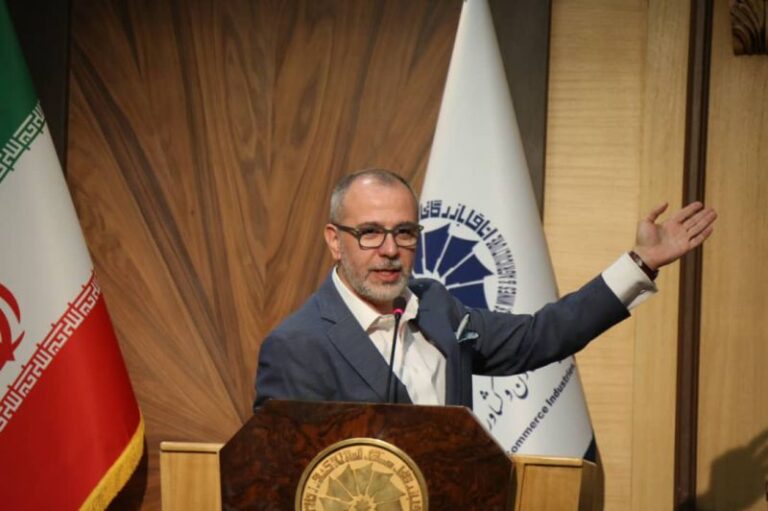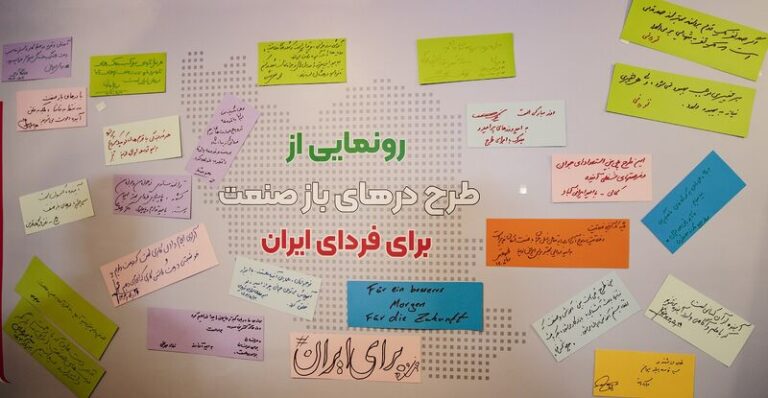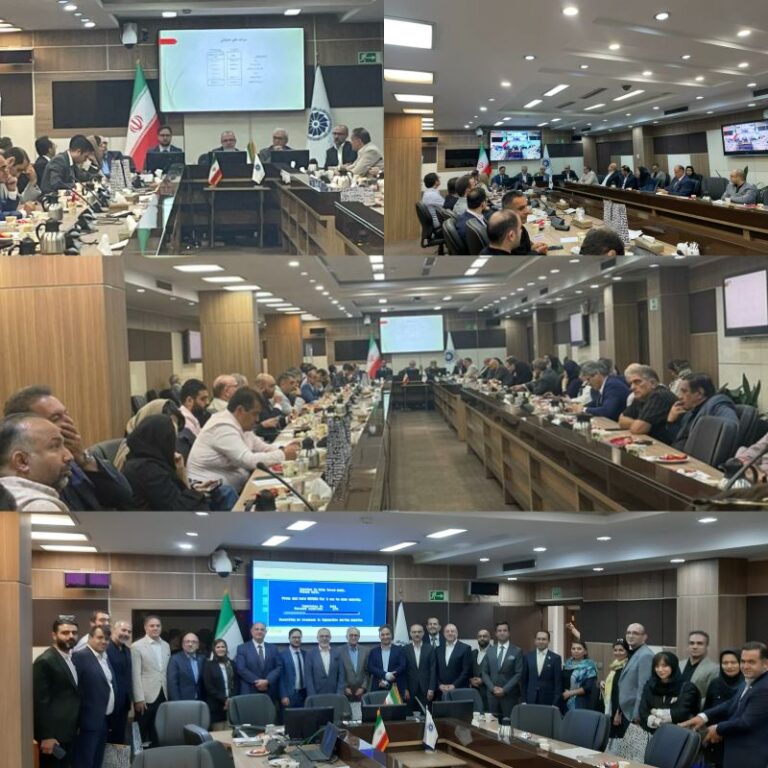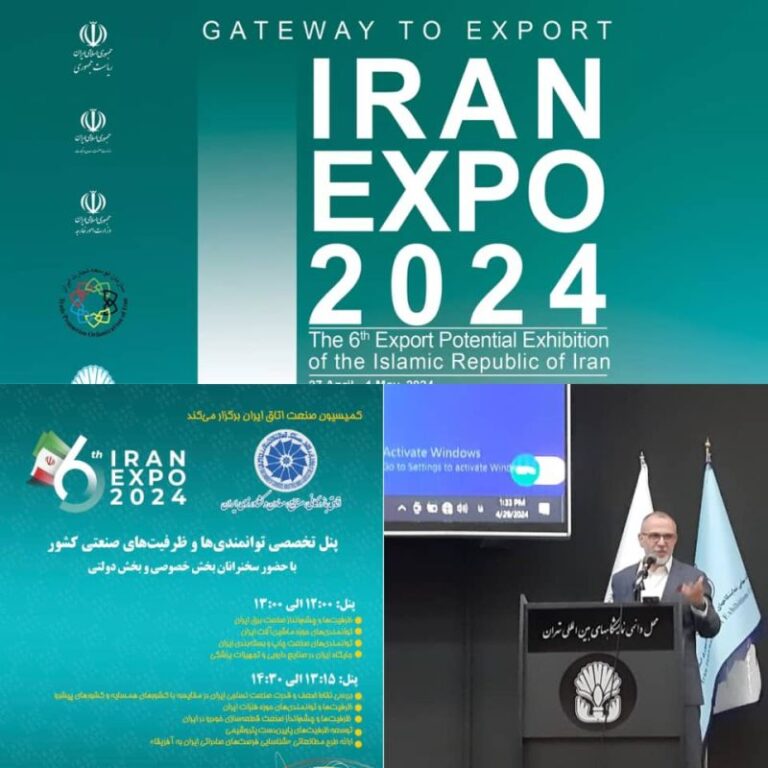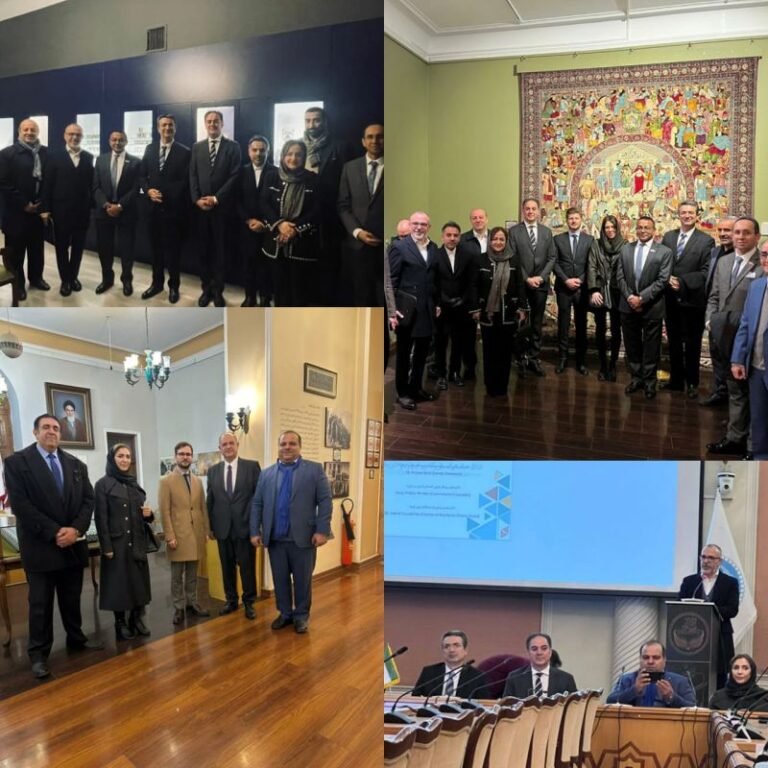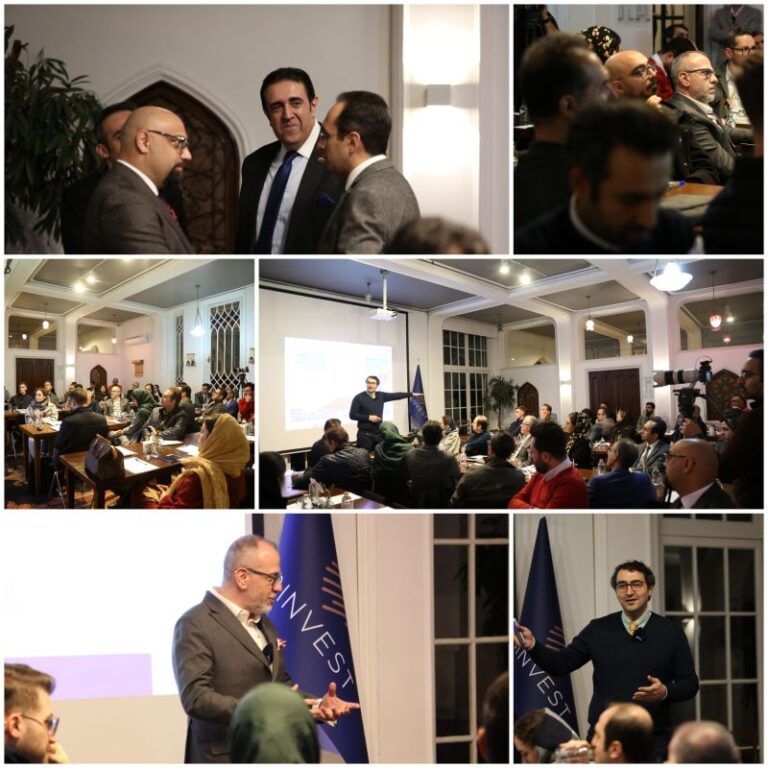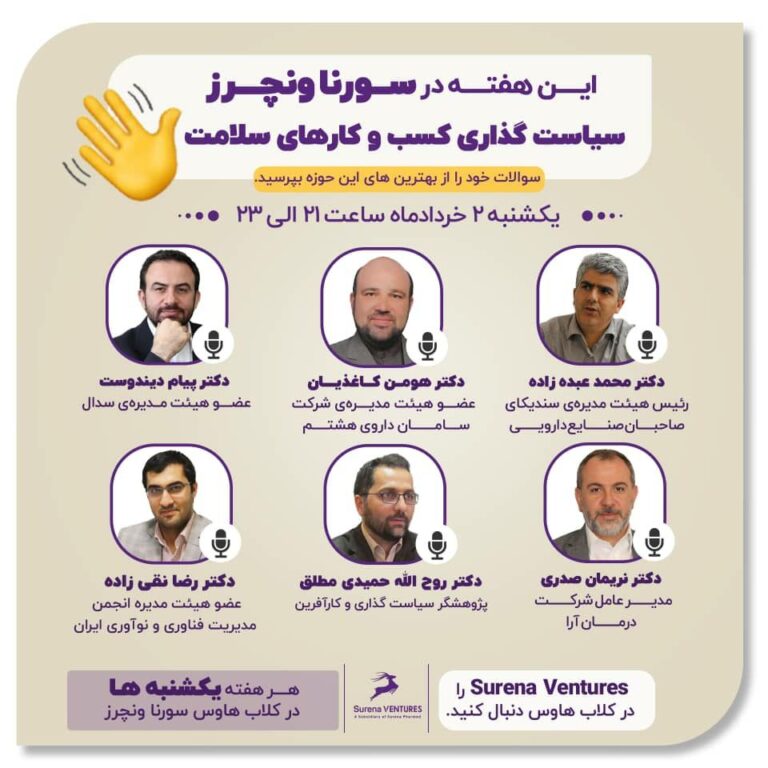Ikigai is a Japanese concept that means “the reason for your being.” In Japanese, “iki” means “life” and “gai” means “value.” Ikigai is our life’s purpose or joy the thing that makes us happy and motivates us to get out of bed every day.
I stumbled upon this concept by chance, and like many other Japanese ideas, it shone brightly in my heart. It resonated deeply with my personal philosophy and understanding of life. Perhaps my experience with ikigai might be intriguing to others as well.
Ikigai is the intersection of four fundamental elements of life:
- What we are good at
- What we love
- What the world needs
- What we can be paid for
When we consistently do something that we love, excel at, that benefits the world around us, and provides the income we need it is likely that we have found our ikigai.
Ikigai does not solely refer to personal goals or individual pleasure. We can only truly find our ikigai when it benefits others including the entirety of life around us.
Everyone has an ikigai that lies at the unique intersection of their passion, talent, profession, and potential to benefit others through their actions. The challenge is discovering it. The journey to ikigai may require time, deep thought, and effort but it is a journey we can all embark upon.
For me, this journey gradually began at some point in life. I don’t know when I will find my ikigai, but I can confidently say that the journey itself is incredibly fulfilling. Even if our journey ends before we reach ikigai, if we have walked this path, we will experience the best moments of our lives along the way.
To give you a visual representation of ikigai, I have included a graphic in the caption of this piece for those who, like me, are visual learners.
Ikigai is an interconnected concept, and it cannot be separated into isolated steps. However, to better grasp it, I will briefly explain the four essential pillars that converge to form it:
1. What You Love
This includes the activities and experiences that bring you the most joy and fulfillment the things that make you feel alive and satisfied. It could be sailing, writing poetry, playing video games, singing in a choir, or spending time with friends. To explore this, we must allow ourselves to think deeply about what we love without worrying about whether we are skilled at it, if the world needs it, or if we can make money from it.
2. What You Are Good At
This includes anything we excel at the skills we have learned, hobbies we pursue, or talents we’ve shown from an early age. This might be playing the piano, empathy, public speaking, sports, surgery, or painting. This pillar reflects our natural talents and developed abilities, regardless of whether we love them, if the world needs them, or if they generate income.
3. What the World Needs
Here, “the world” can refer to humanity as a whole, a smaller community we are part of, or even the entire living ecosystem. What the world needs may be based on our own observations or the expressed needs of others. This could include skilled doctors, clean water, housing, or education for children. At this point, ikigai connects with others’ needs, looking beyond personal desires.
4. What You Can Be Paid For
This represents what someone is willing to pay us for or what could potentially generate income in the future (I had in mind the startup world and the metaverse when reflecting on this). You may be an excellent rock climber, but can you earn money from it? Perhaps. Whether we can monetize our passions or skills often depends on external factors like the economic climate and societal demand.
The journey to finding ikigai is an inner quest with no ready-made blueprint. What matters is that we ask ourselves the essential questions and use our own tools to move toward it.
I wish you an enjoyable journey in finding your ikigai.

